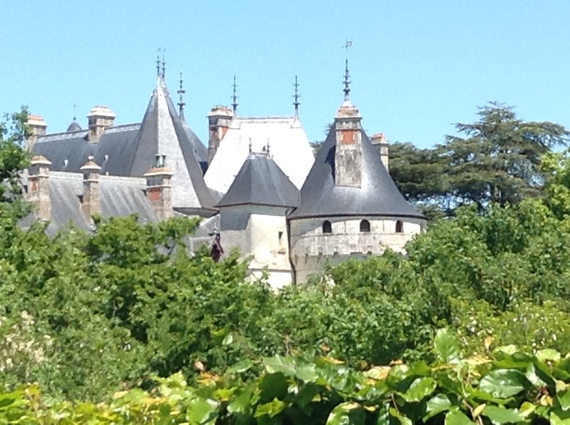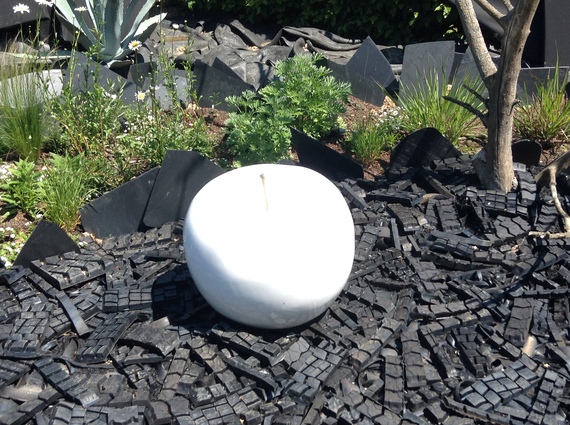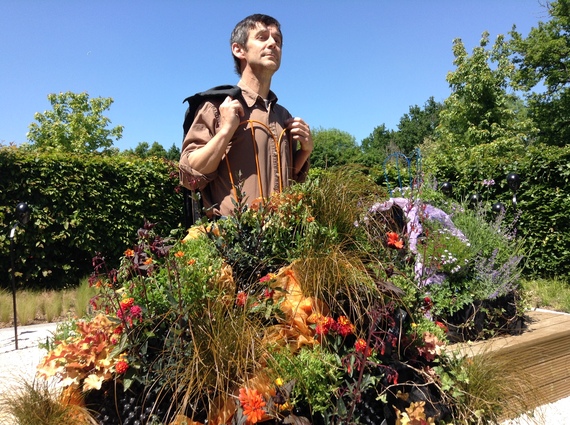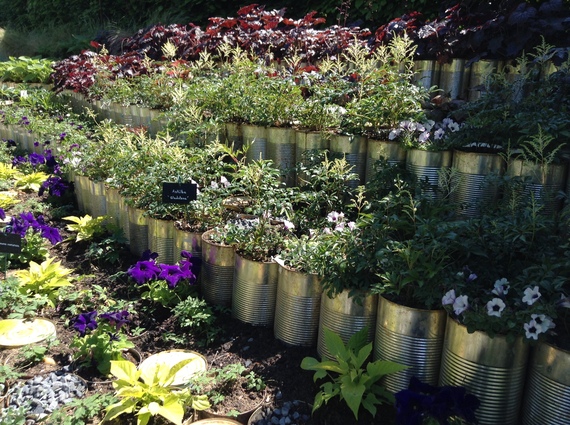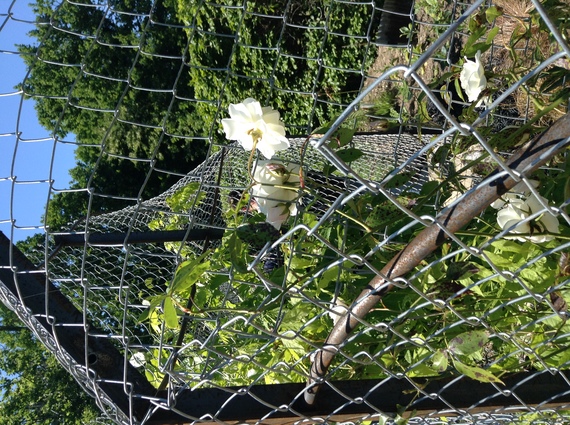Every year for the last seventeen, France's grand Chateau Chaumont celebrates several of the world's most creative gardeners and landscape designers with a monumental garden festival that aims to blend contemporary art with flowers, shrubs, herbs and sculpture--all engaged on a single theme. This year it's The Seven Deadly Sins. As the world's rich grow richer by the second and as the middle class shrivels, the garden artists have appropriately chosen to focus on greed--though they've not forgotten gluttony, lust and pride.
To start at the beginning, in the first of twenty gardens, the ground is covered by chopped up pieces of black plastic and rubber ties from which sprout...dead trees. At the center is a tempting white apple (or seat?)--all of which in the imagination of Dutch designers Arie Van Der Hout and Richard Van Den Berg address the engagement of morality and mortality in an increasingly polluted earth.
Elegance, pride and narcissism take center stage in Valentin Fayet, Pauline Legroux and Jean Pouillart's garden of Haute Culture, where visitors are encouraged to look through black masks as their companions pose on a mound behind metallic bustiers surrounded by lilies and vines.
Gluttony and greed, fragrance and color capture nearly everyone in the work of three French architects, Johan Laure, Hadrien Balalud and Guillaume Giraud in this mountain of floral desire where insatiable guests are encouraged to sit at tall chairs surrounding the feast and salivate over the delights they surround.
Gluttony of the relentless consumer variety follows a bit later as we wander through Alexandra Lehic, Victor LePage and Kevin Lemonnier's stacked alleys of canned consumer goods/degraded plants piling up in the world's ultra hyper-markets while just a few yards beyond in the parking lot hungry widows and children extend their hands in hunger.
Four American landscapers, David Seiter, Elodie Egonneau, Cecil Howell, Koung Jin Cho, combined with sculptural artist Lois Farningham, reflect on contrition in another garden that leads lost (and enchanted) souls down the path to purgatory where they are invited to confess all the mortal sins they/we have committed in our minds in the gardens we've already visited.
A little further comes Charlotte Trillaud and Lucien Puech who remind us that the plants of our addictions--and our addictive obsessions--are ever ready to imprison us in a winding labyrinth of frustration. But just as we are imprisoned within a chain-link fence, so two are the psychotropic plants (smoked, masticated or applied to the flesh) that with modest usage might help us to break through the barriers of our suffering.
These gardens of greed, rage, gluttony and the rest wander on in twenty distinct iterations, all possessed of bushes, trees and flowers that ripen and wilt with the season, curated by orchestra director (and amateur horticulturist) William Christie.
Aside from the surreal garden walk at Chateau Chaumont this year, there are, as always, the dozens of acres of outdoor sculpture--not to mention the exposition of world famous painters and photographers inside the Castle that Sugar Built. You'll find most of the contemporary art in the Chateau's upper stories, but the excessive grandeur of the main floor is also a must, an illustration of the lives of the last aristocrats to sleep there, luxuriating in an elegance extracted from the quasi-slave status under which their workers labored in Haiti's notorious sugar plantations. It's hard to think of a more perfect three-way marriage of art, elegance and exploitation than the Chateau Chaumont.

